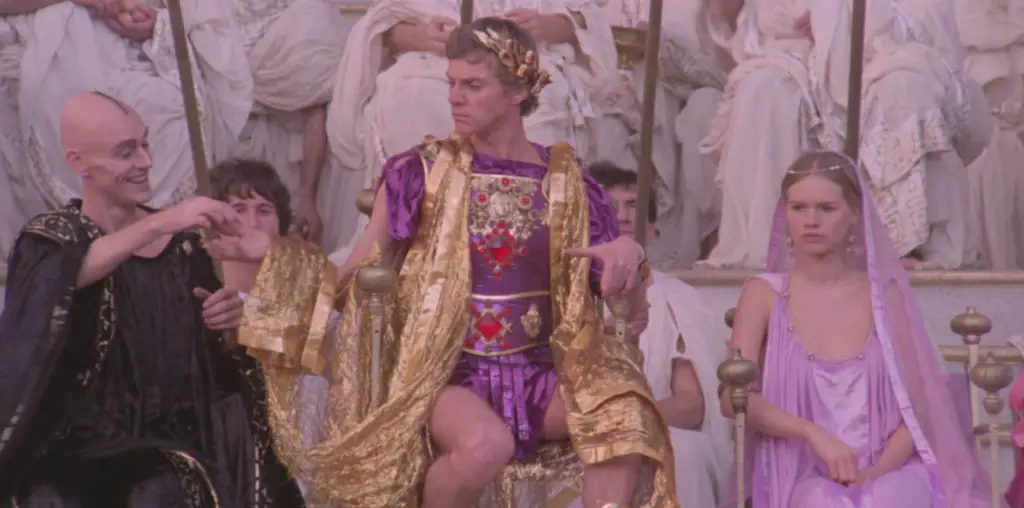
Imagine becoming a permanent resident of the Bates Motel, having the bunk over John Hurt on the deck of the Nostromo, or retiring every night in your own crypt-adjacent room at Castle Dracula.
That’s almost what writer-director Stefan Avalos and producer Marianne Connor put themselves through when they made The Ghosts of Edendale — as far as I know the first and only horror flick, written, produced, shot, edited, scored and mixed at the home of the filmmakers. The movie, which premieres this Halloween week in two Philadelphia-area theaters, is a tale of spectral hijinks set against a backdrop of cinema history. In Ghosts, the idea of naive hopefuls losing their soul to the picture business becomes most literal.
“Edendale” is the mostly forgotten name of a neighborhood in Silverlake — an eclectic, semi-gentrified area of Los Angeles, just east of Hollywood. Large portions of the area are on land once used for silent era filmmaking. In fact, Avalos and Connor’s cozy hillside home was once part of “Mixville” — the filmmaking complex owned by superstar cowboy Tom Mix, who died in a freak Arizona car accident during the 1940s. Since then, the area has attracted the attention of movie buffs and those with an interest in matters spooky.
Like the couple in “Ghosts,” Avalos and Connor came to Los Angeles from their East Coast home to make a splash in the movie world — though, unlike the millions who come here armed only with a dream and a well worn copy of Syd Field, their film careers were already well underway. Connor was an Emmy winning documentary filmmaker; Avalos was co-writer/director (with partner Lance Weiler) of 1998’s “The Last Broadcast,” an enjoyably creepy and imaginative mock documentary vastly superior in almost every respect to 1999’s frighteningly similar The Blair Witch Project.
Once ensconced in their new home, the couple was intrigued to learn they were living on cinematically consecrated ground. “I had no idea who Tom Mix was before I moved here,” said Avalos, a former classical violinist and child prodigy. “People were (saying), ‘Oh, yeah, this used to be Mixville,’ and I thought it was…a recording studio from the sixties.” Interested in anything movie-related, Avalos kept his eyes open, doing a little reading and noting that the public storage facility he used was once a studio belonging to silent comedy kingpin Mack Sennett.
Still, it was just a casual fascination. Job number one for Avalos was following up “The Last Broadcast.” The youngish filmmaker was attracting interest, but potential producers fretted that co-directing a mock documentary, no matter how well made, was not the same thing as pulling off a traditional dramatic feature. On the other hand, doing another horror film would help ensure distribution. It was time for Avalos to try something scary, but less overtly innovative.
“Our first idea had a real sort of hardcore gory thing, where the hill was sort of a sentient thing that itself came alive with vines and plumbing tubes,” Avalos said. But the story quickly evolved into a more psychological thriller, though one with a set-up that would be familiar to any fan of sixties and seventies horror flicks. “We started thinking about the past. We started researching to the point where I think I know as much about Tom Mix as anybody….”
As filmed, the screenplay tells the story of Kevin (Stephen Wastell) and Rachel (Paula Ficara), a young couple who come to Los Angeles both to break into the movies as screenwriters and to escape a troubled past — Rachel is in recovery from an unnamed psychological problem. As they settle into their just a bit too-good-to-be-true home, they encounter friendly but off-center neighbors, who all happen to be involved in “the industry” and who are being suspiciously helpful with Kevin’s career. Before you can say “Amityville,” Rachel is experiencing terrifying visions, Kevin is starting to act like the bastard child of Beelzebub and Robert McKee, and a horrifying bad time is being had by all.
Get the rest of the story in part two of HOMEMADE HORROR – “THE GHOSTS OF EDENDALE” UNITES EARLY HOLLYWOOD WITH THE DV REVOLUTION>>>
